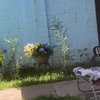Katsura Tree question
littledog
14 years ago
Featured Answer
Sort by:Oldest
Comments (17)
gardengal48 (PNW Z8/9)
14 years agolittledog
14 years agoRelated Professionals
Clark Landscape Architects & Landscape Designers · Downey Landscape Contractors · Gresham Landscape Contractors · Holland Landscape Contractors · Lady Lake Landscape Contractors · Mesa Landscape Contractors · New Baltimore Landscape Contractors · New Berlin Landscape Contractors · Raleigh Landscape Contractors · Welby Landscape Contractors · Cedar Park Siding & Exteriors · Eau Claire Siding & Exteriors · Honolulu Siding & Exteriors · Loveland Siding & Exteriors · Lauderdale Lakes Decks, Patios & Outdoor EnclosuresEmbothrium
14 years agowhaas_5a
14 years agogardengal48 (PNW Z8/9)
14 years agobotann
14 years agojqpublic
14 years agoDan _Staley (5b Sunset 2B AHS 7)
14 years agolittledog
14 years agoDan _Staley (5b Sunset 2B AHS 7)
14 years agoarbo_retum
14 years agowhaas_5a
14 years agoiforgotitsonevermind
14 years agolittledog
14 years agowhaas_5a
14 years agobotann
14 years ago
Related Stories

GARDENING GUIDESNo-Regret Plants: 5 Questions Smart Shoppers Ask
Quit wasting money and time at the garden center. This checklist will ensure that the plants you're eyeing will stick around in your yard
Full Story
KITCHEN DESIGN9 Questions to Ask When Planning a Kitchen Pantry
Avoid blunders and get the storage space and layout you need by asking these questions before you begin
Full Story
REMODELING GUIDESConsidering a Fixer-Upper? 15 Questions to Ask First
Learn about the hidden costs and treasures of older homes to avoid budget surprises and accidentally tossing valuable features
Full Story
Design Dilemmas: 5 Questions for Houzzers!
Post Ideas for Landscaping for a Modern Home, Updating a Rental and More
Full Story
FEEL-GOOD HOMEThe Question That Can Make You Love Your Home More
Change your relationship with your house for the better by focusing on the answer to something designers often ask
Full Story
SELLING YOUR HOUSE15 Questions to Ask When Interviewing a Real Estate Agent
Here’s what you should find out before selecting an agent to sell your home
Full Story
ORGANIZING4 Questions to Help You Organize Your Favorite Photos
Organize your keeper photos with a system that's just right for you, whether it's in the cloud or you can hold it in your hand
Full Story
GREEN DECORATING8 Questions to Help You See Through Green Hype
With the ecofriendly bandwagon picking up some dubious passengers, here's how to tell truly green products and services from the imposters
Full Story
EXTERIORSCurb Appeal Feeling a Little Off? Some Questions to Consider
Color, scale, proportion, trim ... 14 things to think about if your exterior is bugging you
Full Story
CURB APPEAL7 Questions to Help You Pick the Right Front-Yard Fence
Get over the hurdle of choosing a fence design by considering your needs, your home’s architecture and more
Full Story










kitchenkelly